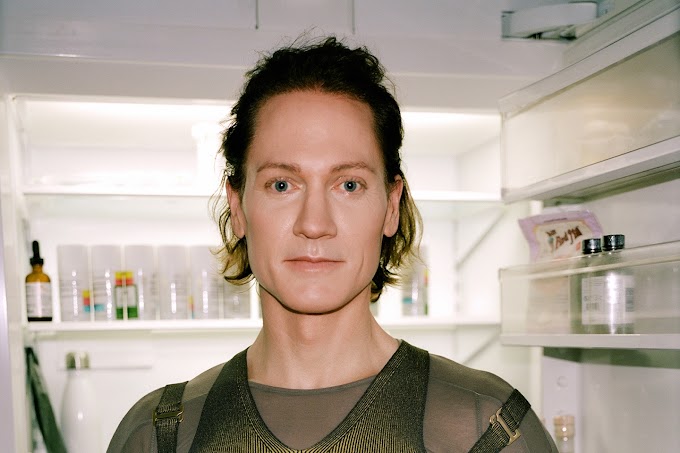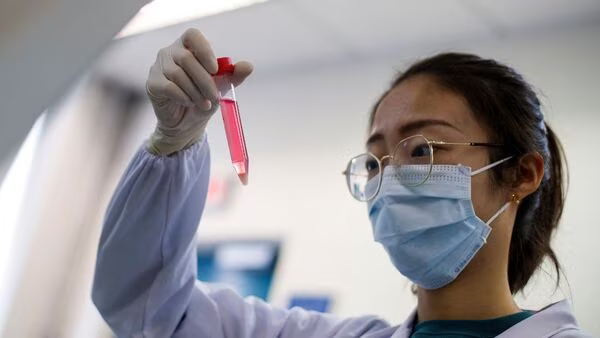Researchers
in the United States have created the 1st live machine by arranging cells from
African clawed frogs into tiny robots that move around under their own steam.
Xenobots are more environmentally friendly and safer for human
health as a biological machinery, the study suggests. It may all sound like something weird from a dystopian sci-fi
movie, but the researchers say there is no need for get worried about it.
About Xenobots:
One of the
most successful creations has two stumpy legs that propel it along on its
“chest”. Another has a hole in the middle that researchers turned into a pouch
so it could shimmy around with miniature payloads. Xenobots are named after
the African clawed frog i.e. Xenopus laevis from which the stem cells arw taken. The xenobots are less than a millimeter (0.04 inches) wide i.e. small enough to
travel inside human bodies. They can work together in groups and can walk, swim and survive for weeks without
food .
What scientists says:
Michael Levin, the director of the Allen Discovery Center at Tufts University said that -- These are entirely new lifeforms. They have never before On our planet. “They are living, programmable organisms.”
Michael Levin, the director of the Allen Discovery Center at Tufts University said that -- These are entirely new lifeforms. They have never before On our planet. “They are living, programmable organisms.”
Stem cells
are unspecialized cells that have the ability to develop into different cell
types. The researchers ditch living stem cells from frog embryos, and castaway them to incubate. Then, the cells were cut and reshaped into specific
"body forms" designed by a supercomputer -- forms "never seen in
nature," according to a news release from the University of Vermont.
The stem cells then began to work on their own -- skin cells bonded to form structure. The heart muscle cells allowed the robot to move on its own. These living machines even
have self-healing capabilities; to probe this, the scientists sliced into one robot, it
healed by itself and kept moving.
Roboticists tend to accommodate metal and plastic for their strength and durability, but Levin and his colleagues see convenience in making robots from biological tissues. When get wounded or damged, living robots can heal themselves, and once their job is done they fall apart, just as natural organisms decay when they die.
According to the scientists, the future versions of these Xenobots might be deployed to clean up
microplastic waste in the sea, to locate and digest toxic materials,
deliver drugs in the human body or remove plaque from artery walls. According to Joshua Bongard, a senior researcher on the team at the University of Vermont-- “It’s
impossible to talk about what the applications will be for any new technology, so we
can really only guess,”
Traces left by xenobots as they move through a field of particulate matter. Photograph: Douglas Blackiston
This research could have "a enormous influence on regenerative medicine."
"If we
became able to make 3D biological form on demand we can correct birth defects,
reprogram tumors into normal tissue, regenerate after degenerative disease, and We'll be able to defeat ageing-- said the researchers' website.
The Xenobots are designed by an “evolutionary algorithm” that
runs on a supercomputer. The program set start by creating random 3D
configurations of 300 to 1200 skin and heart cells. Each design is then tested by using simulation, to test, for example, how far it moves when the heart
cells are set beating.
Because heart
cells Instinctively contract and relax, they behave like midget engines that
drive the robots along until their energy reservoir gets empty. The Xenobots are pre-loaded with their own food source like lipid and protein deposits. The stem cells
have enough fuel in them for the Xenobots to survive for a week to 10 days
before die.
The
scientists hold for the computer to produce more quantity in a short time-- 100 generations before picking
a handful of designs to build in the lab. They used tweezers and cauterising
tools to chisel early-stage skin and heart cells withdrawn from the embryos of
African clawed frogs.
Writing in
the Proceedings of
the National Academy of Sciences, the researchers demonstrate how they
set the robots loose in dishes of water to keep the frog stem cells alive. Some of them crawl along in straight lines, while others looped around in circles or teamed
up with others as they move around.
“These are very small, but ultimately the plan
is to make them to scale,” said Levin. These love robots might be built with blood
vessels, nervous systems and sensory cells, to form rudimentary eyes.
“The aim is to
understand the software of life,” Levin said. “If you think about birth
defects, cancer, age-related diseases amd other deadly problems, all of these things could be solved if
we knew how to make biological structures.
The research
is funded by the US Defense Advanced Research Projects
Agency’s lifelong learning machines programme. This aims to recreate biological
learning processes in machines.
At last one question for you : whether these xenobots should be classified as living creatures or machines...?









1 Comments
Good going Shubham keep it up 👍
ReplyDelete